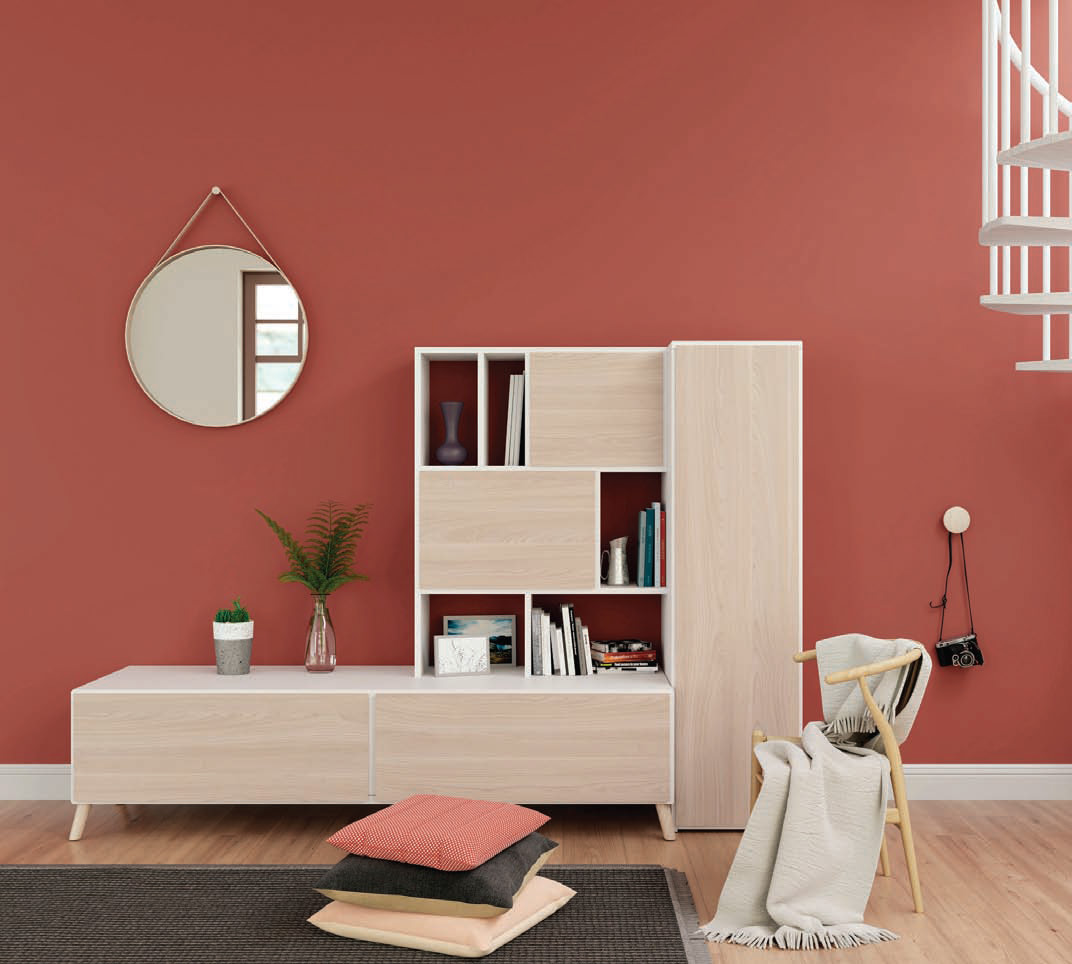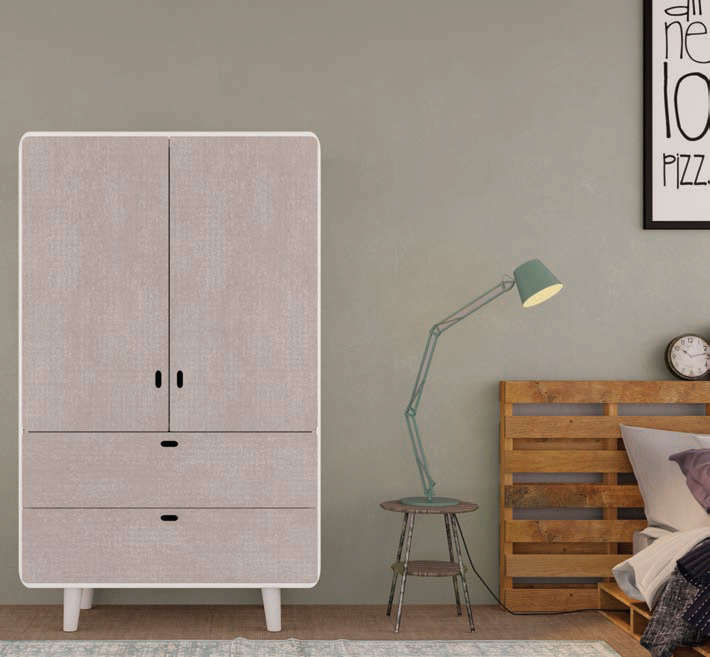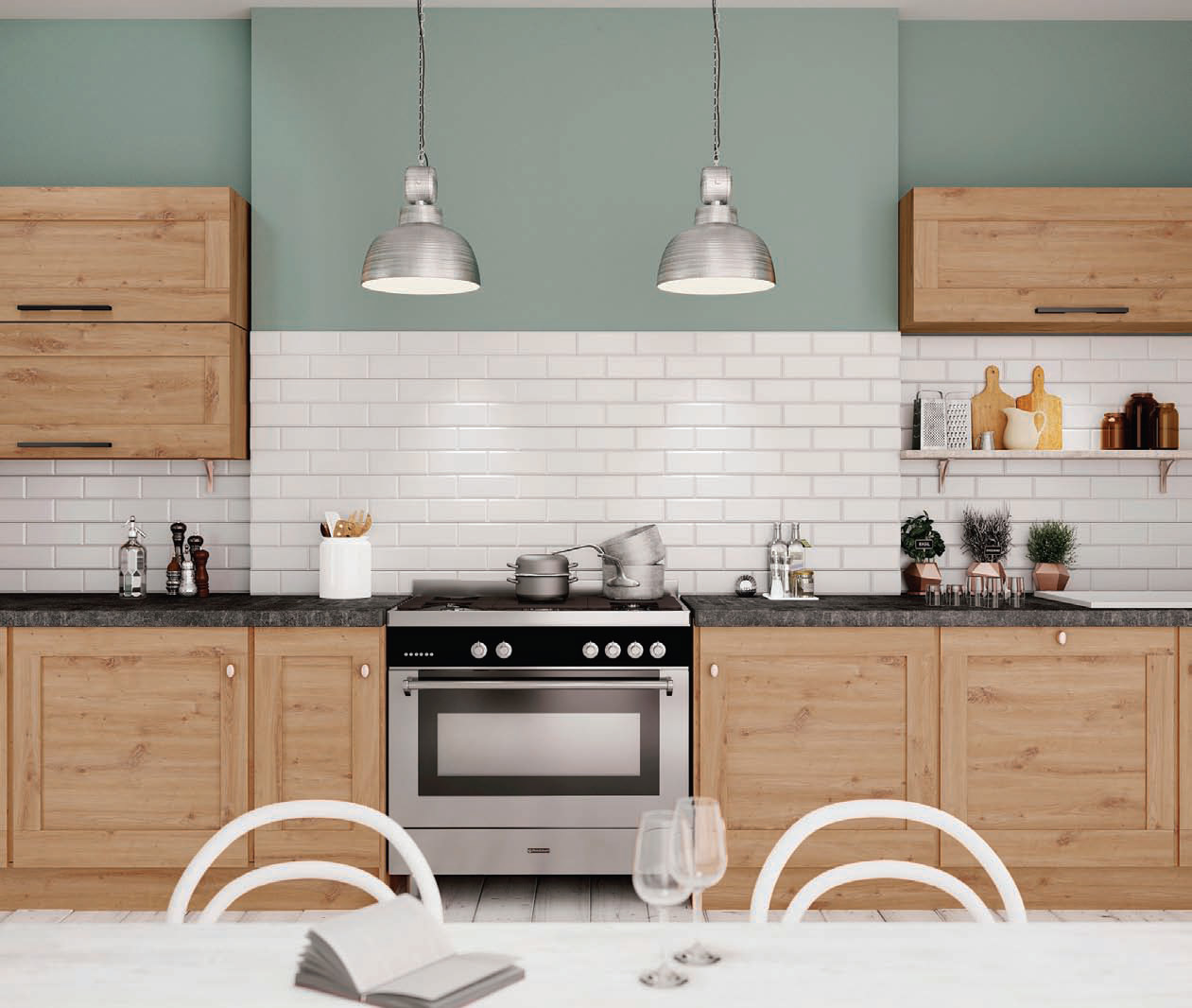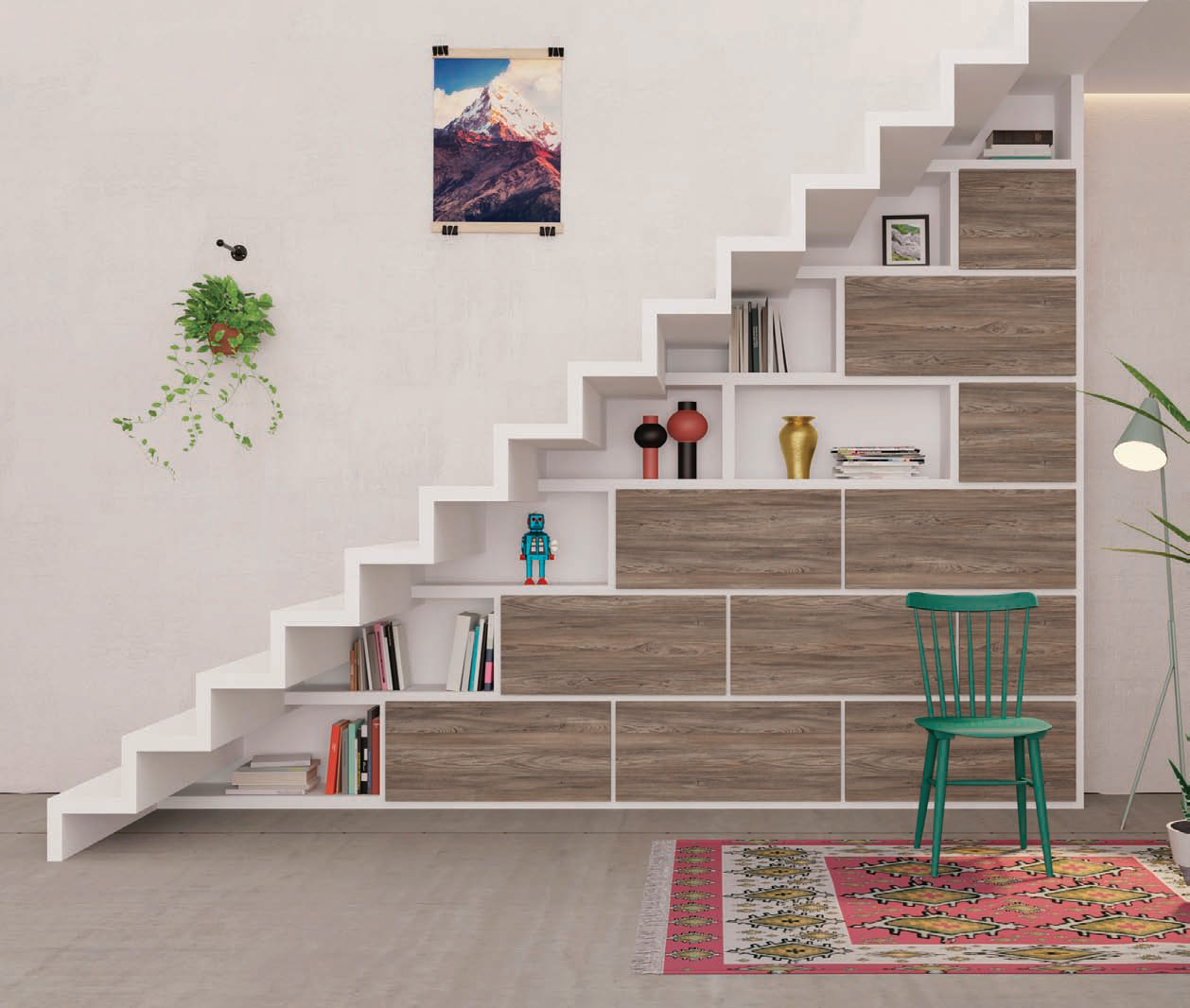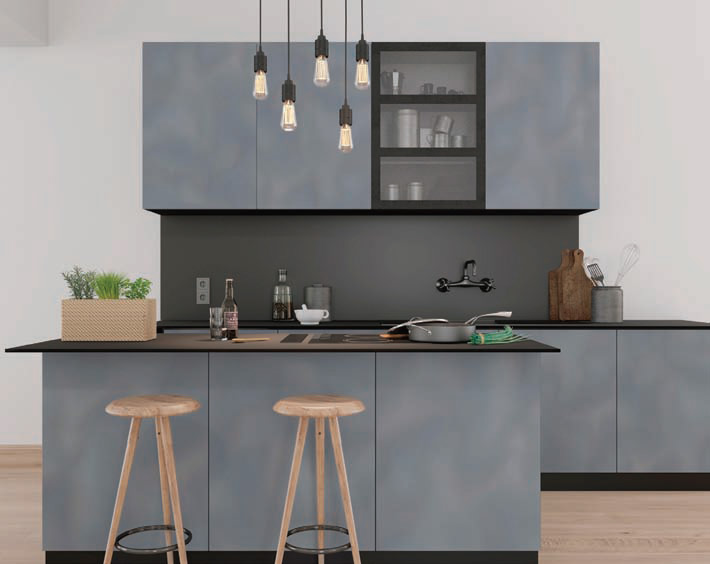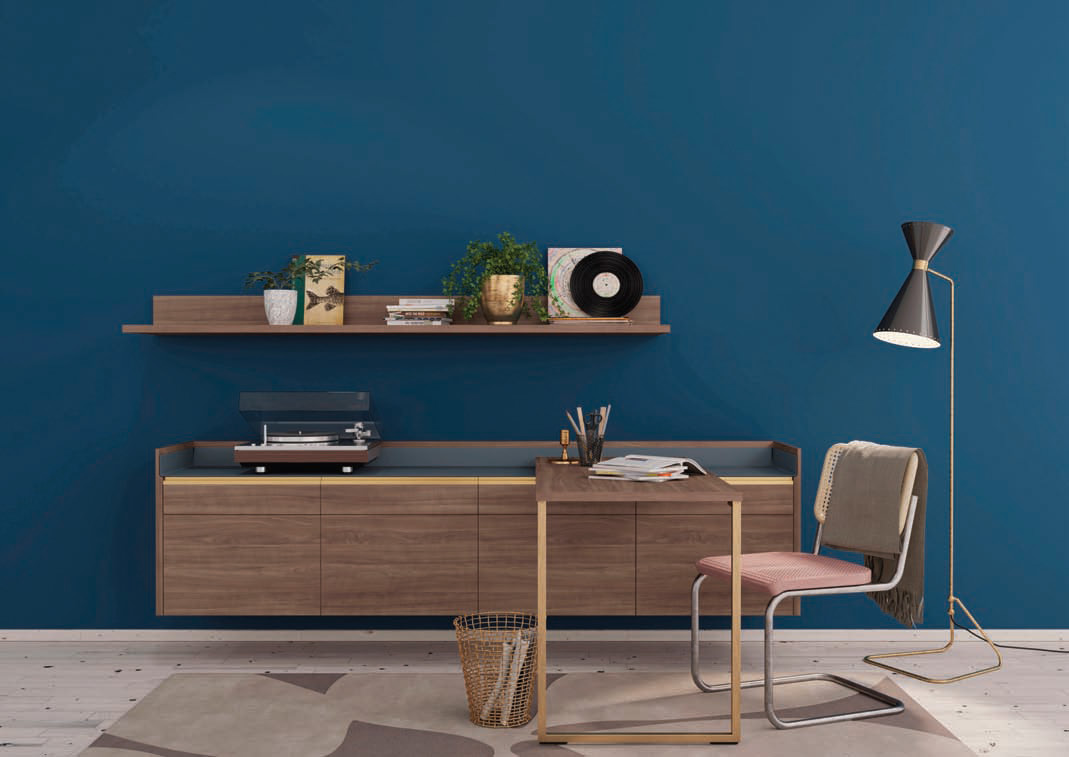A mirror on modern day living
30 March 2018With state-of-the-art printing technology coupled with design and marketing expertise Interprint maintains an enviable position with creating decors reflecting the changing world of modern living.
Décor printer provider Interprint GmbH & Co KG, headquartered in Arnsberg, Germany, is one the largest décor printers globally and has just presented its new décor collection, the Six Pack 2018 in which the company sees special international market potential for these six décors depicting accurate replicas of wood, concrete, stone and steel.
The selected décors for current home trends are named Delios, Artisan Oak, Hansen, Garbo, Aurora and Grid. Delios is an old larch from the Alpine region and the white oil treatment creates an innovative colour effect.
Artisan Oak in timber framing wood had the goal of technical reworking to obtain the character of old wood, thus offering a warm and authentic contrast to the cool, industrial look.
Hansen replicates a blond wood in the Nordic style and the material has been reduced to the essentials, a typical Scandinavian trait. Cut flowers and variable striped parts support the look.
Garbo is a walnut interpretation of a fruitwood. Soft core and sapwood elements give the décor its elegant look. Timeless and universal it harmonises with styles ranging from modern Nordic to traditional Italian.
Aurora follows the metal trend with a cold-rolled steel plate with traces ofthe grinding process. It has metallic effects with a cool look reminiscent of the northern lights. It is also available in a brass look.
Grid, the last décor in the pack, has a material mix with the look of concrete and stone. The geometry of the Grid reveals floral details up close. It can be cut any way and used anywhere – at home and in urban spaces
Interprint’s products are basically used to decorate the surfaces of various materials in the segment of derived timber products, including living room, kitchen and bathroom furniture, laminate flooring and interior furnishing in trains, ships or recreational vehicles.
Interprint has eight production locations worldwide – in Germany, Poland, Russia (two), Malaysia, China, Brazil and the US – and six sales offices in Italy, Spain, South Africa, Russia, China and Turkey with sales agencies represented around the world.
The company is wholly owned by Wrede Industrieholding, a traditional, family-run company with more than 125 years of experience in the wood and materials sector. Interprint itself was founded in 1969.
The company uses two printing technologies: gravure and digital. With gravure printing the décor is printed using the rotogravure method. The engraved rotogravure printing cylinders apply lightfast, water-soluable printing inks to the décor paper that is to be printed.
Excess ink is removed with a doctor blade. The printing ink is therefore located only in the depressions (the socalled cells) of the printing cylinders. A high contact pressure and high adhesive forces cause the ink to be transferred on to the paper.
In 2015, Interprint began operating the first industrial digital-printing system in the world for printing timber, stone and creative decors on décor paper.
The company sees the new system as an important addition to classic gravure printing. This technology can be used for economical manufacturing – even in smaller quantities – of newly developed decors. Secondly, it is intended to be used for printing small batches of individual decors.
In July 2016 Interprint invested in a state-of-the-art, 2.20m wide four-colour rotogravure printing machine to expand its printing capacities.
Together with the necessary peripherals the total investment volume amounted to about €6m. The investment allowed one of the leading decorative paper printers for the derived timber product and furniture industries to achieve a production volume increase of four to five thousand tons of decorative paper per year.
“Our investment in the new printing press is another milestone for the company,” explained Interprint’s CEO Frank Schumacher. “We thus continue our dynamic growth and clearly confirm our commitment to the Arnsberg location.”
For Holger Dzeia, CSO of the Interprint Group, the investment primarily means a competitve edge in terms of customer service. “We can meet our customers’ demands at an even higher level and set new quality standards with our products.”
The new printing machine was put into opration in early summer of 2017. It was the eighth rotogravure printing machine in the Arnsberg production department and overall the 25th printing machine of the Interprint Group.
The ‘transform’ Décor Book, which was produced for the 10th Interprint Furniture Days in the autumn of 2016, has now also received one of the most important design awards, the Red Dot Award 2017 in the ‘Communication Design’ discipline.
A 24-member expert jury selected the best works in a multi-day process. Agencies, designer and companies from 50 countries applied for the award with their comunication and creative works.
The Interprint marketing and design team and its partner lamonto design studio and the wordflow copywriter agency in Cologne are responsible for the realisation of the 200-page book.
Salvatore Figliuzzii, director of marketing and design at Inteprint, emphasised the high importance attached to communications in the marketing of Interprint’s own product lines: “We continue our previous year’s successful track record in communication design with our award winning ‘transform’ trend book”.
